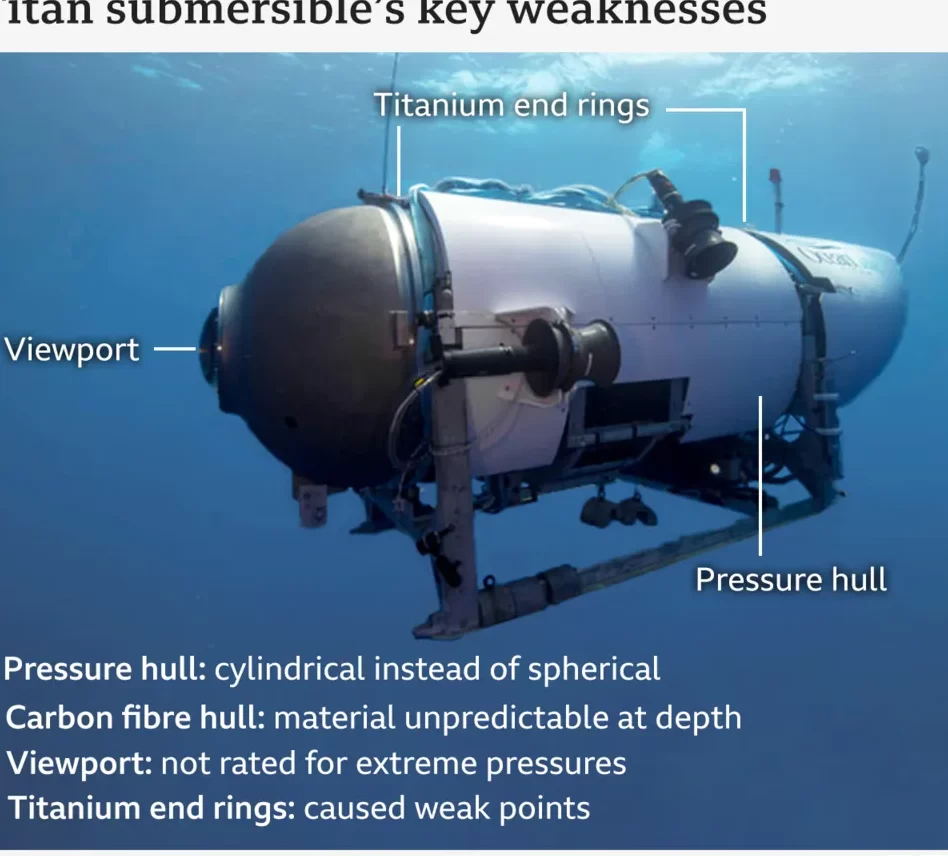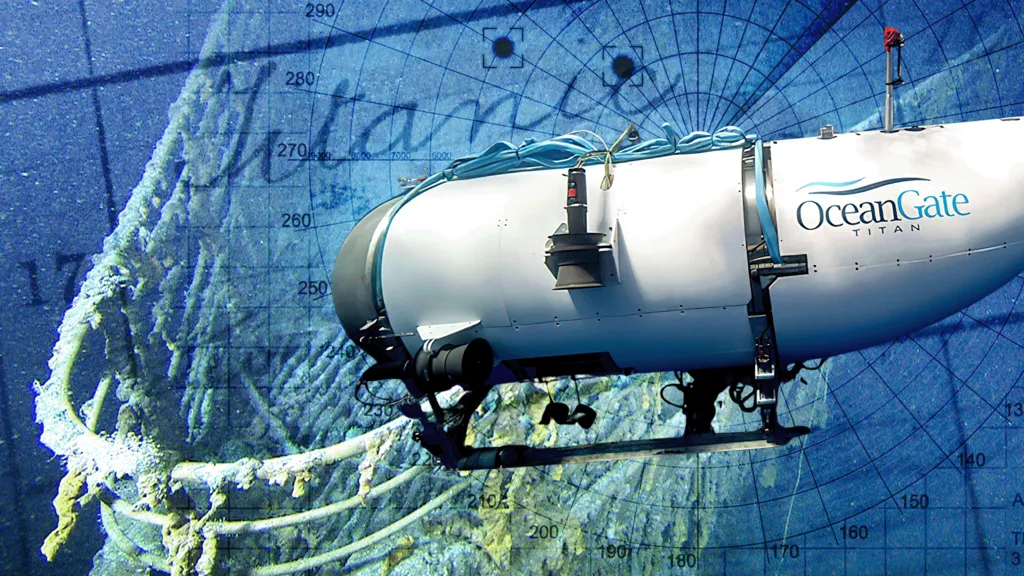A chance to explore the Titanic wreck by plunging 3,800 meters (12,500 feet) into the Atlantic.
However, an Oceangate Titan submersion went horribly wrong the previous year. All five persons on board perished in a catastrophic breakdown that occurred as the ship got closer to the ocean floor.
On September 16, the US Coast Guard will convene a public hearing to investigate the causes of the accident, including the submarine’s unique design, the disregard for safety alerts, and the absence of regulations in the deep waters.
Titan’s plummet into the waves started on June 18, 2023, early in the morning.
The group included British adventurer Hamish Harding, seasoned French diver Paul Henri Nargeolet, British-Pakistani businessman Shahzada Dawood, together with his 19-year-old son Suleman, and Oceangate CEO Stockton Rush.
The US Coast Guard was alerted later that day after the craft failed to resurface, which led to an extensive search and rescue effort.
The entire globe waited to hear about the missing submarine. However, debris was found on June 22 approximately 500 meters (1,600 feet) from the Titanic’s bow. After just one hour and forty-five minutes of diving, Titan had collapsed.
There are still five important questions that need to be addressed.

Were the passengers aware of the problems with the dive?
Through its onboard communications system, Titan’s comrades could send text messages to the Polar Prince, the backup ship. Any signs that the sub was malfunctioning may be found in the log of these conversations.
The ship also carried an acoustic monitoring system, which was essentially microphones mounted on the sub that looked for indications that it was breaking or buckling.
Leading deep sea explorer Victor Vescovo says, “Stockton Rush was convinced that if there was an imminent failure of the submersible, they would get an audio warning on that system.”
However, he expressed his strong doubts that this would have given the sub enough time to surface. “The question is, how soon would that warning occur?”
Those on board might not have known their impending demise if there were no obvious issues during the descent and the alarms did not go off.
Since the implosion happened instantly, the passengers would not have had time to comprehend what was going on.
Which Titan subcomponent malfunctioned?
To identify the cause of the malfunction, forensic specialists have started analyzing the remains of Titan.
There was more than one problem with its design.
Titan was plunging nearly three times deeper than the viewport window’s maker, which certified it for a maximum depth of 1,300 meters (4,300 feet).
In addition, Titan’s hull had a peculiar shape—it was cylindrical rather than spherical. Because the hulls of the majority of deep-sea submarines are spherical, the crushing pressure of the deep is dispersed equally.

Additionally, the sub’s hull was constructed from carbon fiber, an unusual material for a deep-sea craft.
The most widely used metals are those like titanium since they can withstand extreme pressure with reliability.
“In the deep ocean, carbon fiber is thought to be an unpredictable material,” says Patrick Lahey, CEO of a reputable manufacturer, Triton Submarines.
The carbon fiber was crushed and harmed each time Titan dove into the Titanic, and it had done so several times.
He said that the fibers were splitting, which was why it was growing weaker over time.
Concern was also raised by the intersections of several materials. Weak points were created by attaching the carbon fiber to two titanium rings.
According to Patrick Lahey, the commercial subindustry has a historic, impeccable safety record.
Were the noises of the ocean distorting the search?
In an attempt to locate Titan, ships, planes, and remotely operated vehicles (ROVs) were hurried to the Atlantic.
A few days into the search, reports of sounds heard underwater that were detected by the sonar of a search plane suggested they might originate from the sub.
After being dispatched to find the source, ROVs turned up nothing.
The sounds are still unknown; the ocean is always loud, but this is especially true during an operation of this kind.
When the sub vanished, the US Navy’s sonar equipment picked up a more relevant subsea sound—an auditory signal that was consistent with an implosion. Only on the day that Titan’s remains were discovered was the information made public.
It is unknown when the families and friends waiting on the support ship for the sub were notified of the noise or when the US Coast Guard was notified of it.
The wreckage was eventually located when the deep-sea robots made their way back to the location where Titan had vanished.
The BBC was recently informed by Rory Golden, who was aboard the Oceangate mission when contact was lost, that the people on board the surface vessel went through four days of terror and “false hope.”
Why did the government permit Titan to dive?
Independent, specialized marine organizations like the American Bureau of Shipping (ABS) or DNV (a global accrediting organization with its headquarters in Norway) can conduct a thorough safety assessment on deep-sea submersibles.
Titan was not subjected to this technique by Oceangate.
The evaluation would have verified whether the vessel complied with regulations throughout its design, build, testing, and operation phases.
Although it is not required, the majority of operators choose to certify their deep-sea submarines.
Rush claimed that certification “slowed down innovation” in a 2019 blog post and characterized his subscription as “experimental.”
In an email correspondence with Rob McCallum, he stated that his own procedures and the passengers’ “informed consent” were sufficient proof that Titan was safe.
For a seat on Titan, guests had to pay up to $250,000 (£191,135). A liability waiver was required of each of them.
Irish businessman Oisin Fanning dived twice in Titan in 2022, the last dive taking place just prior to the sub’s tragic accident.
He added that the Oceangate crew gave thorough briefings prior to each dive because they took safety very seriously. However, he was not informed that Titan lacked certification.
He said, “I would be lying if I said I didn’t think that had been done already—that it adhered to certain norms.”
“Everyone understood that Titan was an experimental ship. Since there had evidently been a few dives prior and everything appeared to be going smoothly, we were quite optimistic.
The duration of the public hearings is two weeks. There is optimism that the solutions it offers could save a catastrophe like this one from occurring in the future.





This was a really pleasant read, very useful.